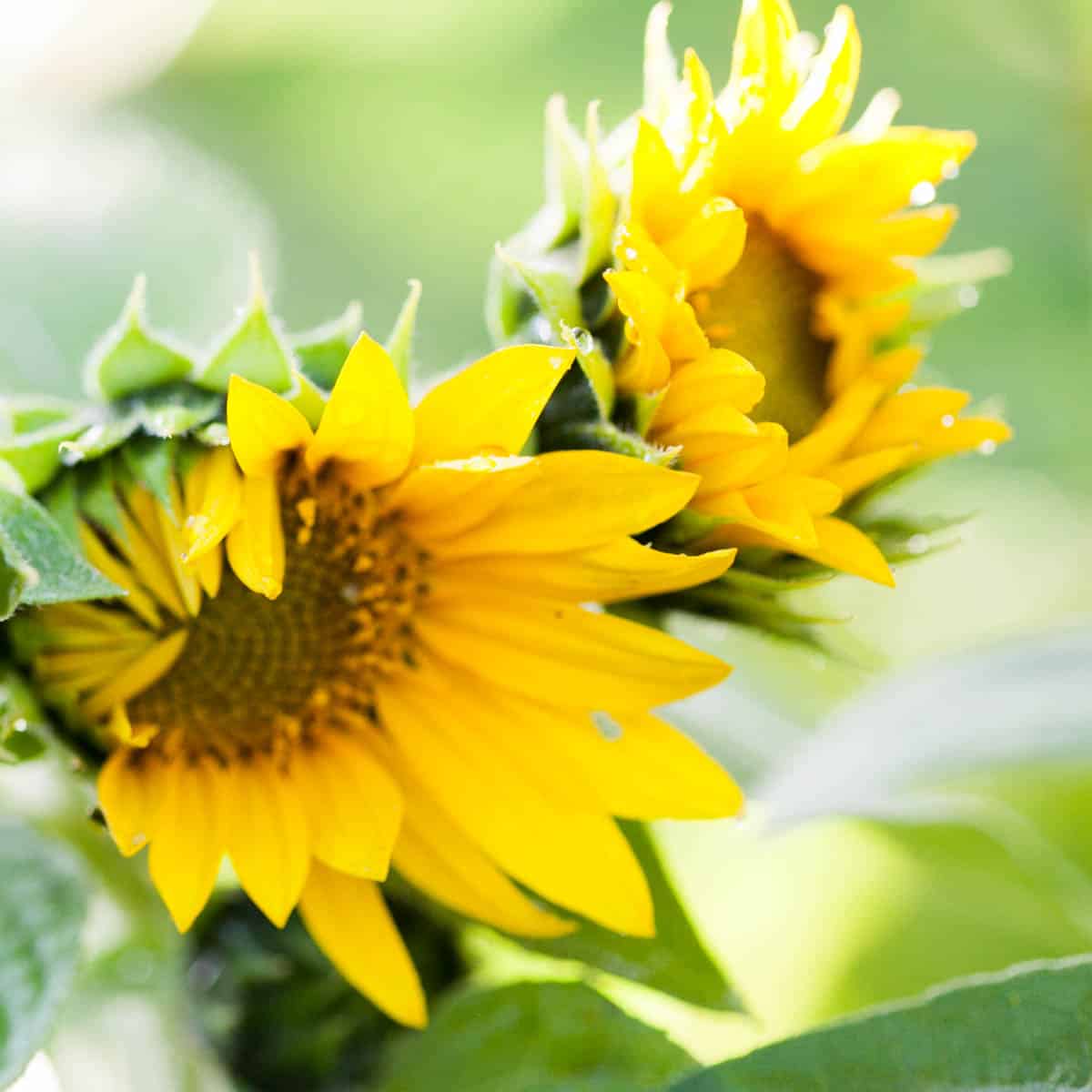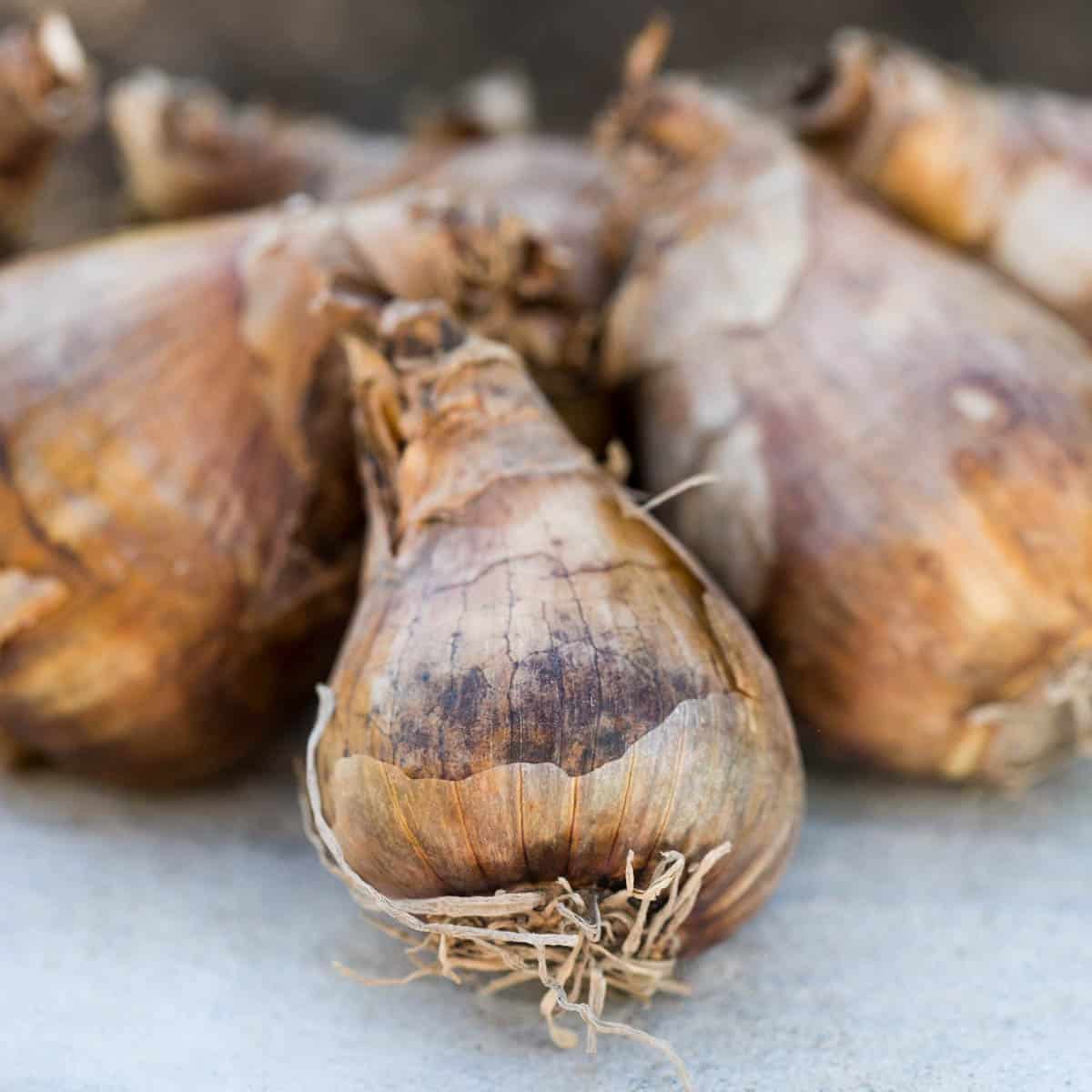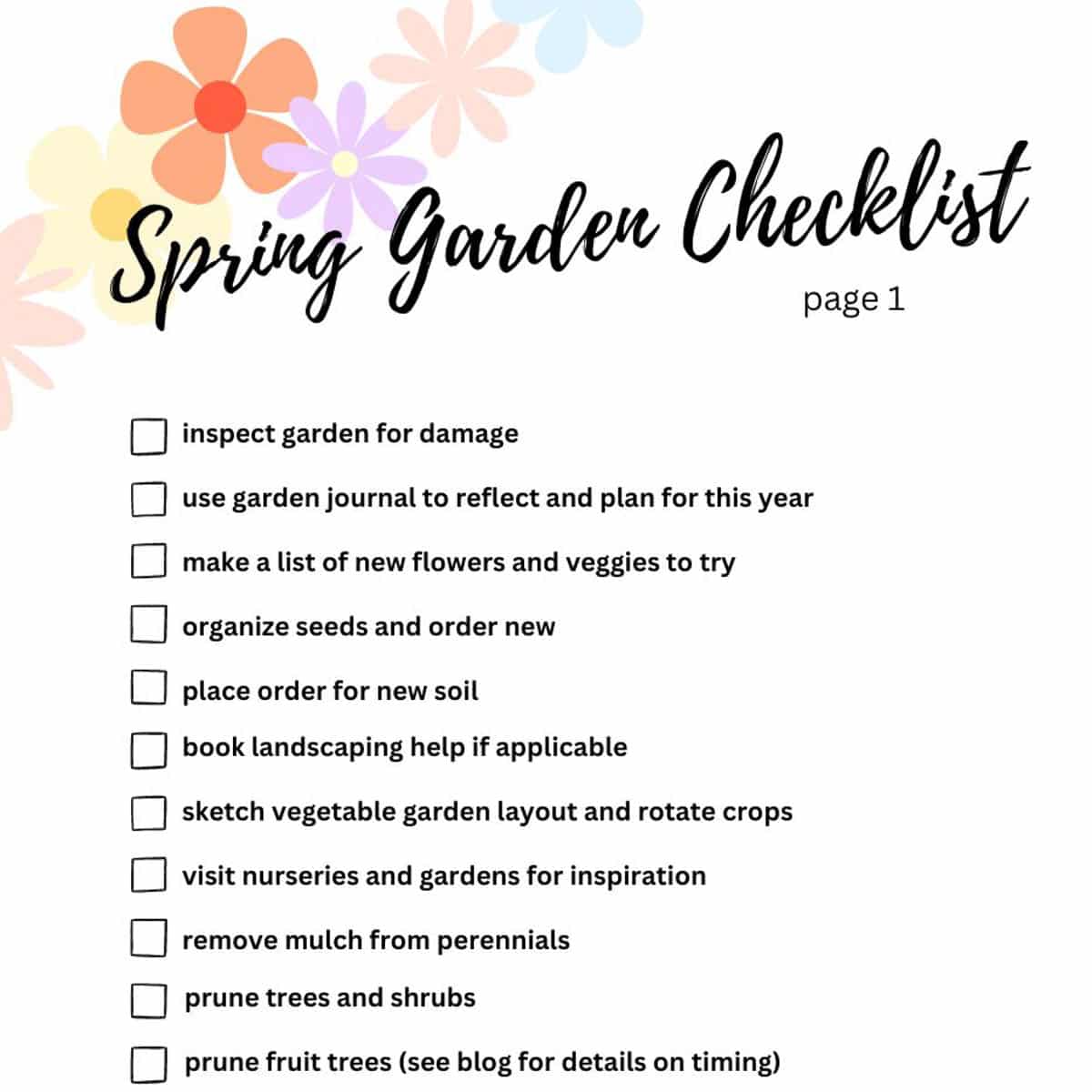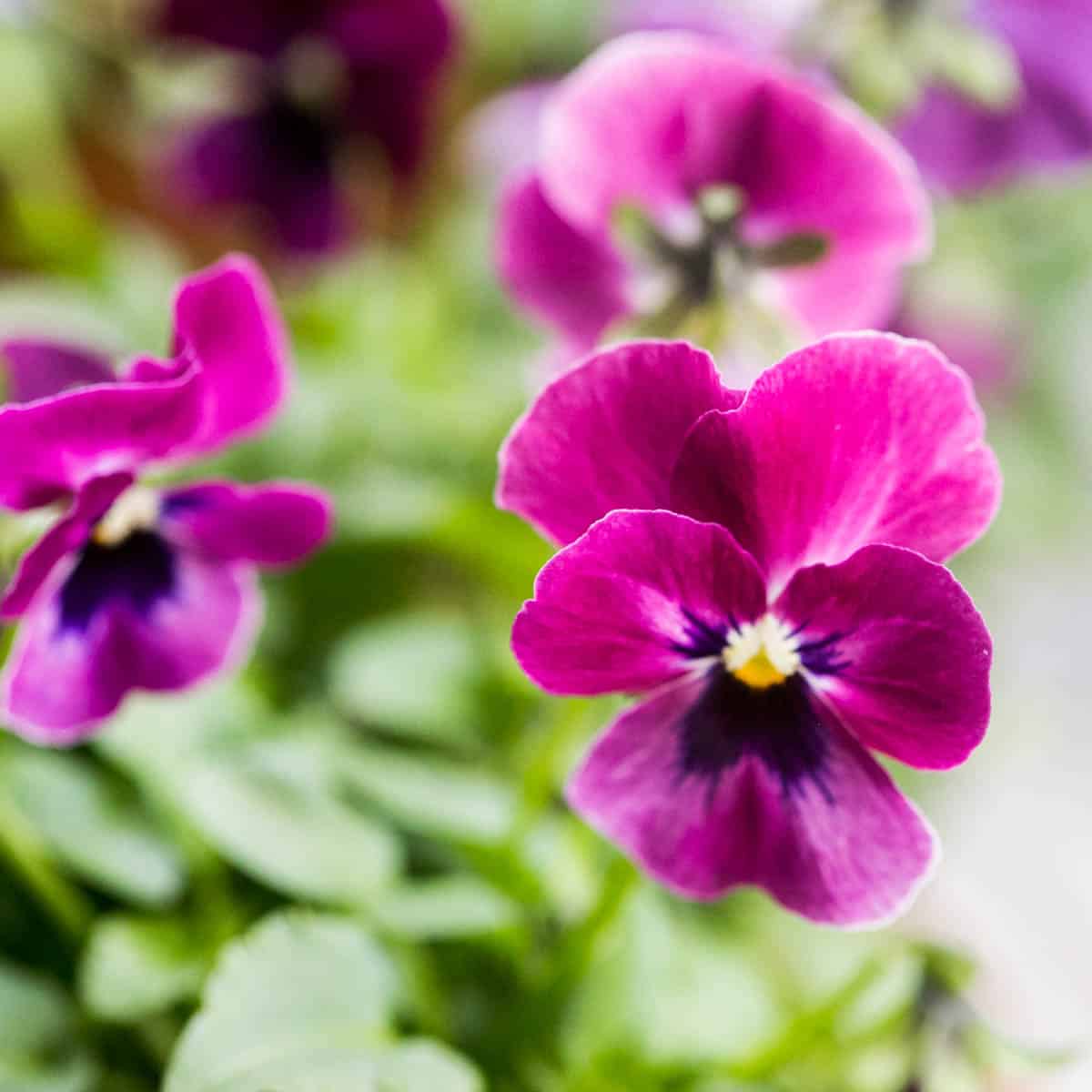Do Mint Plants Flower? Learn here!
Mint is a powerful herb that grows easily in gardens everywhere. It is well known for it’s medicinal and culinary uses and spicy, delicious scent.
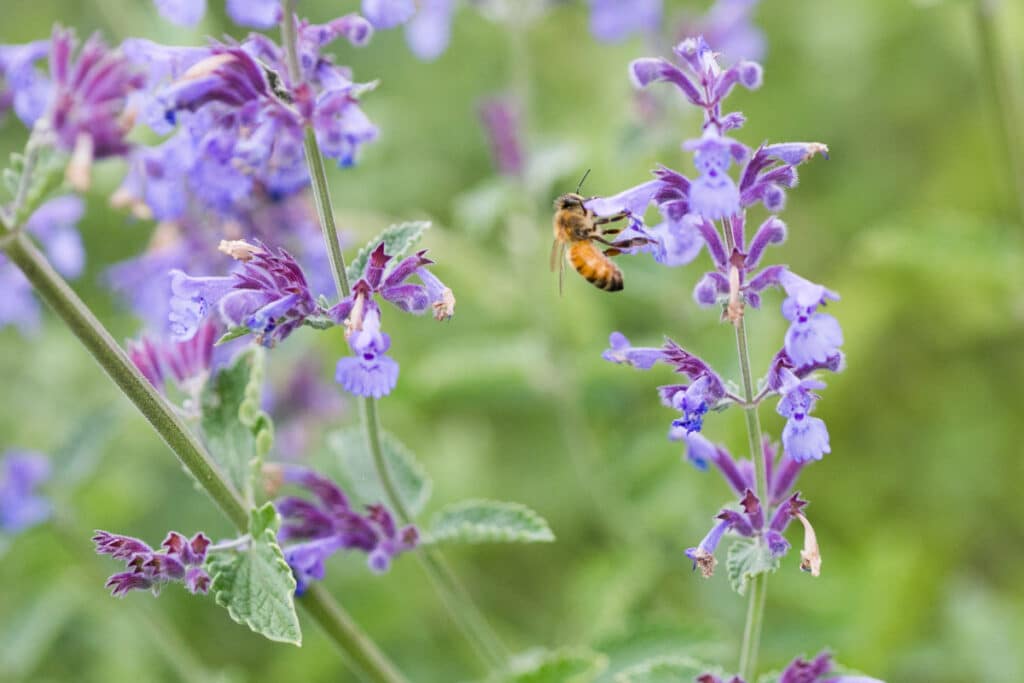
If you have this aromatic plant growing your garden you may be wondering, do mint plants flower?
The answer is yes, mint plants flower. Mint is a flowering herb with vibrant green leaves. It blooms when temperatures turn very warm, usually in mid to late summer.
Spicy and fragrant, mint is a perennial herb that completes it’s seasonal life cycle by producing flowers at the end of the summer.
The purpose of flowers on a mint plant is both pollination and to send out seed to create more plants.
Since it is a hardy perennial herb, mint does not die after flowering and will come back season after season. Mint attracts many bees and butterflies. Because of cross pollination, there are thousands of mint species to enjoy!
Learn all about why mint plant flowers, what to do with mint flowers, and how to keep your mint plant healthy below.
About Mint
Mint is a valuable herb known for it’s medicinal properties. It is easy to grow and thrives in partial shade to full sun and brightens up the herb garden with it’s distinctive flavor and spicy sent.
Mint leaves grow in fertile soil on square stems and readily send out shoots for new plants. This traditional herb has many uses from essential oils to flavoring cold drinks (mint julep anyone?).
Mint plants die back when frosts hit and begin growing again in early spring as soon as temperatures warm. Members of the mint family are prolific growers, and can thrive in part shade and moist areas as well as full sun.
Mint is an extremely adaptive plant that can easily take over the garden beds. We once lived in a 100 year old home where mint was lovingly planted. It grew almost too well, taking over flower beds and the vegetable garden. Luckily, mint is very easy to pull up.
A healthy mint plant will flower in late summer when temperatures are warm. This perennial herb sends out purple, pink or white flowers. The purpose of a mint plant flowering is to send out seeds to ensure more plants will grow and the species continue to thrive.
Modern day mint plants are often sterile, so even if the plant flowers, you may not end up with any new young plants.

What Causes Mint To Flower?
While mint plants naturally flower as part of their life cycle, both high temperatures and lack of water can stimulate mint into flowering early.
If the summer growing season is unusually hot or dry, this may stress the mint flower, causing it to “bolt”, or flower earlier than usual.
Blooming is a natural part of a mint plant’s life cycle.
Life Cycle
Flowering is a natural part of a mint plant’s life cycle. Mint produces flowers during it’s reproductive stage, and flowers attract pollinators such as bees and butterflies.
The nectar rich flowers attract insects, who then carry the pollen of the mint from plant to plant. As the flower head dies, seed pods emerge, thus prolonging the existence of the species.
Mint plants typically produce flowers in their second year of growth. When different mint varieties are planted close together, cross pollination can occur.
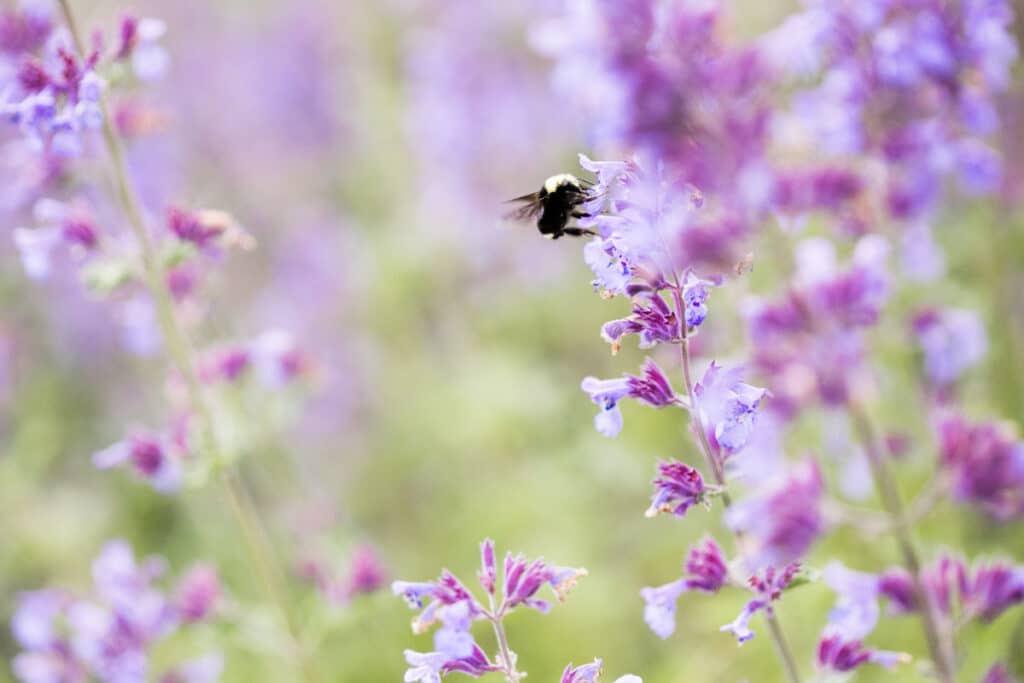
Shape + Appearance Of Mint Flowers
The mint flower is small but long and tubular, which is the perfect shape for attracting bees and butterflies. Mint come in colors of white, pink or purple flowers.
When flowering, the production of leaves slows down and the energy of the plant is put into the flowers.
How To Get Mint To Flower
Mint is an incredibly low maintenance plant…however it does have a few preferences on light and water. Planting mint in the right conditions is critical to growing a healthy plant:
Growing In Containers
Mint is a great plant to add to a container herb garden. When growing in a pot make sure to drill drainage holes in the bottom of the container and use well-draining soil designed specifically for container plants. Do not use water from the garden or garden soil as the soil will not drain and will dry out quickly.
Always provide good drainage for mint in containers!
Place your pot of fragrant herbs in partial to full sun. Mint in pots should flower towards late summer.
Growing Flowering Mint In The Ground
When growing in the ground, keep your plant healthy by finding a spot with moist but well-drained soil rich with organic matter. A nutrient dense soil will give you a spicier, more flavorful mint.
Mint grown in the home garden will bloom earlier with intense heat and sun. The best way to promote a natural bloom time is to plant your mint in partial shade. Morning sun and afternoon shade seems to be a great location from our experience.
Mint do not like wet feet- be sure to avoid puddling water.
Pant your mint in the right place and water well and it will thrive!
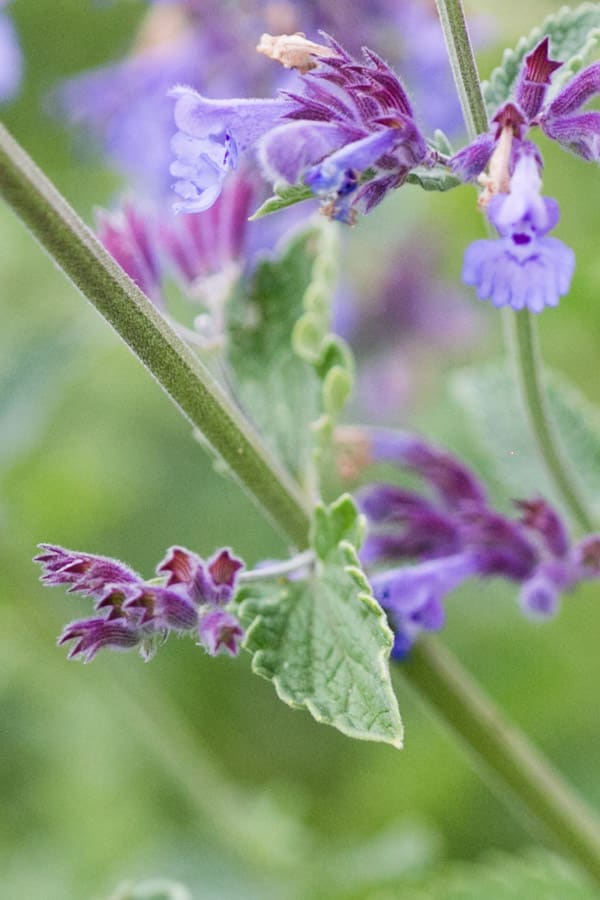
Benefits of Flowering
Mint flowers are surprisingly beautiful when flowering, and the flowering process offers several benefits:
- Flowering plants attract pollinators. Bees and butterflies swarm to mint flowers. These insects are attracted to the flower buds, and having mint plants near a garden can aid in pollination of fruits and vegetables as well.
- Mint flowers are edible, and can be a lovely garnish for savory dishes. Fresh leaves with their flowers can make a pretty ornament for a beverage, such as mint tea.
- Flowering mint is beautiful! Mint flowers add a romantic touch and fit well with cottage style gardens.
Harvesting Mint (And It’s Flowers)
The best time to harvest mint is right before the flower buds blooms. The flavor will be most intense at this time.
Use garden clippers or simply pinch mint leaves right before the first or second set of lower leaves. Harvesting mint in this way will will promote new growth and a bushier plant.
Mint is a vigorous grower and you may be able to harvest your plant multiple times in a season.
Of course, if your mint plant has already flowered, you can still harvest and use both the mint leaves and the flowers.
The best flavor is found in a mint plant before it flowers, however you can still enjoy minty taste after the herb blooms.
What To Do With Mint That Has Flowered
Mint that has flowered can be used in many ways. Here are just a few ideas:
- Add as garnish and for extra flavor in fruit salads, new potatoes and roasts
- Make floral ice cubes by freezing mint flowers in square ice cube trays
- Press and dry mint flowers for homemade crafts
- Add to homemade ice cream for a delicious flavor and beautiful texture (our vote is for chocolate mint)
Flowering and Fertilizer
Typically mint does not need fertilizer in order to bloom. If you are growing your mint in nutrient deficient fertilizer or in a container, however, you can add a slow-release fertilizer in early spring. (Do not over fertilize mint!).
How To Prevent Mint Plants From Flowering
To prevent mint from flowering, prune it back heavily to ground level in early spring after the initial growth, then regularly trim new shoots.
The easiest way to do this is to regularly harvest mint and use it in your own herbal remedies and recipes. The green, aromatic leaves make beautiful home decoration as well. Trimming a little bit of a mint plant at a time will not hurt it, mint is incredibly hardy and one of the easiest plants to grow.
Popular Types Of Mint
There are many different species of mint (genus mentha) grown in North America. Consider growing different varieties of mint to see what type of mint, and their flowers, you love best.
It is a good idea to grow mint in containers because of it’s ability to spread prolifically through it’s root system. Alternatively, you can bury a large container in the ground and plant
Our favorite varieties of mint plants include:
Chocolate Mint actually has a subtle chocolate scent and flavor. It is wonderful to add to drink, especially hot cocoa.
Pineapple Mint has variegated yellow and green leaves and is a unique addition to the garden.
Lemon Balm has larger leaves than typical mint plant and is known for it’s calming properties
Spearmint is refreshing and minty.
Catmint is one of the most beautiful flowering mints, with a soft green leaf and light purple flower.
Why Is My Mint Not Flowering?
Mint may fail to thrive for several reasons:
- A container mint plant may be root bound and no longer to access water and nutrients from the soil. Consider transferring to a larger container.
- Too much shade. While mint can tolerate shade, it does need sunlight to flower.
- Over watering. While mint enjoys moist soil, it does need to be well draining. Wait to water mint until the top of the soil is dry to the touch, then soak deeply.
- Spider mites can infest mint plants and cause damage to the leaves. Depending on the damage, the mint plant may not be able to thrive and bloom
- Some varieties of mint do not flower as frequently as others, so you may have a variety that is just not an enthusiastic bloomer
A word to the wise: Mint is a wonderful herb to grow, but this plant is a prolific grower! Mint will send out many new shoots from the roots of the parent plant and can quickly take over a flower bed.
Does Mint Grow Back Every Year?
Yes, mint is a perennial and grows back every year. You will see it flower in late summer and then die off during fall frosts. Rest assured mint will return the following year in late spring to early summer.
The mint plant will flower each year unless it is cut back before blooming. After cutting back, new leaves will quickly return!
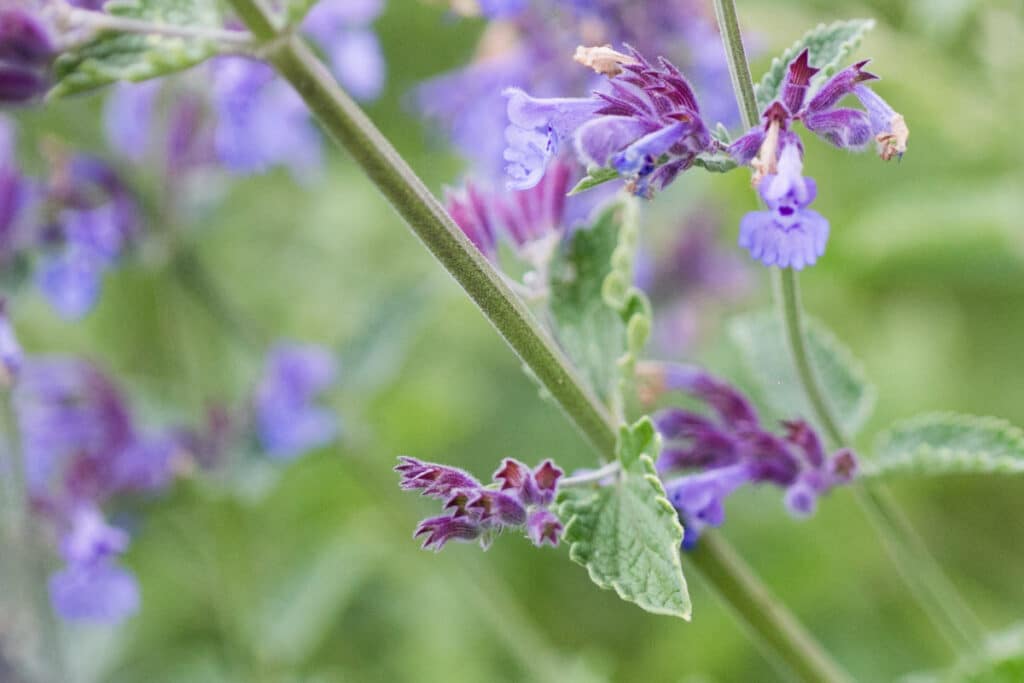
In summary, mint plants flower as a natural part of their life cycle each year. Spicy and fragrant with pretty flowers, mint is a great addition to a flower or vegetable garden.
The flowers attract pollinating insects and mint flowers have many wonderful uses are the kitchen and home.
Let us know in the comments how you use mint flowers, and what type of mint is your favorite.


